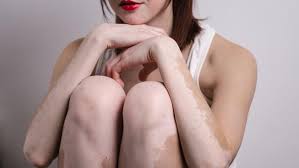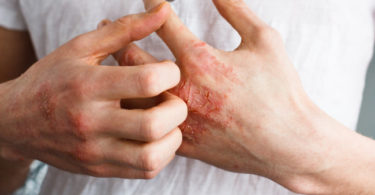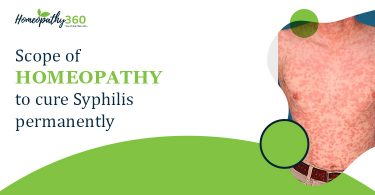Abstract
Headaches are common in children and adolescents. Among children 5 to 17
years of age, 20% of the total pediatric cases have reported to be of headaches.(1) The most
common types of headaches in this age group are tension headaches i.e. about 15% and migraine
i.e. 5%. However, less than 3% of headaches are the result from serious or life threatening
conditions.(2)
Many a times, headaches in children and adolescents are also as the result of
psychosocial factors, social environment, life events, school and family stressors. Homoeopathic
medicines can be effective in the treatment of acute as well as chronic headache.
Introduction
Recurrent headache is a common complaint in pediatric practice. It is reported
that the prevalence rates of childhood headache vary from 5.9% to 78.4%. The prevalence of
migraine however increases with age from 1.4% for all children younger than 7 years of age up
to 13.8% at the age of 15 years. In contrast to adults, there is a male preponderance of childhood
migraine.
Types of Headache
Headache disorders can be categorized as either primary or secondary. As with adults, the vast
majority of headaches in children and adolescents are primary headache disorders: migraine
(with or without aura), tension-type headache, abdominal headache and chronic daily headache.
Secondary headache disorders, although much less common, may be due to various organic
etiologies which can range from the relatively benign to the serious. Such underlying organic
conditions include:
bacterial causes: acute febrile illness, rhino-sinusitis, dental abscess, intracranial and
extra cranial infections;
systemic illness: hypertension, diabetic ketoacidosis;
Miscellaneous: head or neck trauma, vascular malformations, subarachnoid hemorrhage,
intracranial mass lesions, caffeine induced headache, etc.(3)
The most common trigger was stress which was reported by 75.5 % of patients.(4)
Sources of stress in children and adolescents can include:
School: new school or new teacher, tests and exams, bullying, learning disabilities
Family: very permissive or very strict parents, a new brother or sister, divorce, death of a
family member.
Friends: very few friends, peers make fun of him/her.
Many studies show that there is a clear association between headache and sleep disorders.5,6
Treatment
The most commonly used medicines were Belladonna (32%), Ignatia amara (11%), Iris
versicolor (10%), Aconite (10%), and Gelsemium (9%).7
Constitutional treatment is recommended for recurrent headaches caused by stress, anxiety, or
tension. However, if you know or suspect that a headache is a symptom of another condition
acute remedies can be prescribed depending on the case.
Some common medicines for headache in children are listed below:
Aconite: Headache comes on suddenly, feels worse in cold or draughty surroundings,
person apprehensive, headache feels like a tight band around head or as if brains are
being forced out of head.
Arnica: Head feels bruised and aching, pain occasionally sharp, made worse by stooping
Apis: Stinging, stabbing or burning headache, rest of body feels bruised and tender,
symptoms worse in hot, stuffy surroundings
Belladonna: Throbbing, drumming headache, flushed face, dilated pupils, distinctly
worse in hot sun.
Bryonia: Head feels bruised, sharp, stabbing pain made worse by slightest eye
movement.
Gelsemium: Head feels full and swollen, face purple and congested-looking, expression
dull and heavy, dilated pupils, limbs weak and shaky.
Glonoinum: Violent headache in which every heartbeat sets up an answering thump and
throb in the head, made worse by stooping or shaking head.
Hypericum: Bursting, aching headache, hypersensitive scalp, worse in damp, foggy
weather.
Ignatia: Headache described as tight band across forehead or as nail being driven out
through side of head
Nux vomica: Child often irritable, prone to dull, dizzy, bruising headaches which are
rather like being beaten around the head, worse first thing in the morning but better when
person gets up.
Ruta: Pressing, bruising headache associated with fatigue, made worse by reading,
alleviated by rest.
Homeopathic treatment of migraine is however constitutional but the remedies listed below are
to be used in emergencies/ acute pain conditions, These remedies work better when taken at the
first signs of an attack.
Iris: Blurring of vision before headache comes on, tight feeling in scalp, headache right-
sided but less insistent if person moves around, vomit mostly bile
Lycopodium: Headache worse on right side, feels as if temples are being screwed into
each other, trying to concentrate makes pain worse, dizziness.
Natrum muriaticum: Throbbing, blinding headache, warmth and moving around make headache
worse, head feels overstuffed and congested, attack preceded by numbness and tingling in
lips, nose, and tongue.
Pulsatilla: Headache worse in evening or during a period, aggravated by rich, fatty food,
head feels as if it is about to burst, person easily bursts into tears.
Sanguinaria: Headache worse in the morning, bursting pain which is right-sided and
seems to start at back of head, with pain extending into right shoulder, some
improvement later in day.
Silicea: Pain starts at back of head, then shifts and settles above one eye, aggravated by
cold, alleviated by wrapping head up warmly and tightly, person prone to head sweats.
Spigelia: Sharp, darting, severe pain over left eye, pain seems to pulse with every
heartbeat, stooping or moving suddenly makes pain worse.
Thuja: Left-sided headache, as if head is being pierced by a nail.
Conclusion
Many children and adolescents have episodic headaches that respond easily to
homeopathic medications. The challenge is in dealing with those who have frequent and
debilitating headaches. A multidisciplinary approach is the most helpful for patients with severe
headaches: a balance of medication with therapy and lifestyle changes. Although decreasing the
frequency and severity of headaches is important, success is ultimately measured by how much
we help the child return to normal functioning in home, school and social life.
References
1. Headaches in Children & Adolescents | Cleveland Clinic [Internet]. Cleveland Clinic. 2020
[cited 19 January 2020]. Available from: https://my.clevelandclinic.org/health/diseases/4225-
headaches-in-children-and-adolescents.
2. Faedda N, Cerutti R, Verdecchia P, Migliorini D, Arruda M, Guidetti V. Behavioral
management of headache in children and adolescents. The Journal of Headache and Pain.
2016;17(1).
3. Abu-Arafeh I, Özge A. Headache in children and adolescents.
4. Neut D, Fily A, Cuvellier JC, Vallée L (2012) The prevalence of triggers in paediatric
migraine: a questionnaire study in 102 children and adolescents. J Headache Pain 13(1):61–65
5. Dosi C, Figura M, Ferri R, Bruni O (2015) Sleep and Headache. Semin Pediatr Neurol
22(2):105–112
6. Freedom T (2015) Headaches and sleep disorders. Dis Mon 61(6):240–248
7. Danno K, Colas A, Masson J, Bordet M. Homeopathic Treatment of Migraine in Children:
Results of a Prospective, Multicenter, Observational Study. The Journal of Alternative and
Complementary Medicine. 2013;19(2):119-123.





